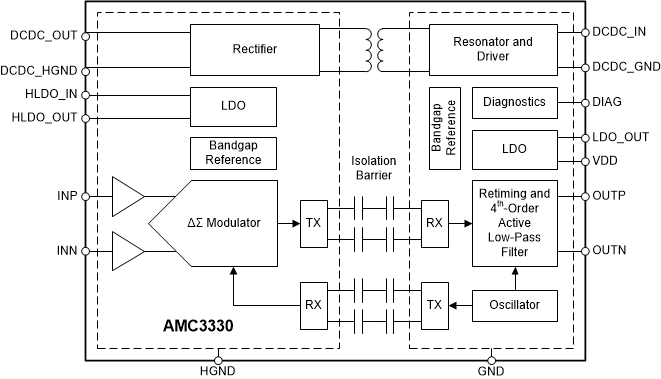TIDUEZ8C december 2022 – june 2023
2.2.2 AMC3330
The AMC3330 is a fully-differential precision isolated amplifier with high-input impedance, and an integrated DC/DC converter that allows the device to be supplied from a single 3.3-V or 5-V voltage supply source from the low voltage side. The input stage of the device drives a 2nd-order, delta-sigma (ΔΣ) modulator. The modulator uses an internal voltage reference and clock generator to convert the analog input signal to a digital bitstream. The drivers (termed TX in the Functional Block Diagram) transfer the output of the modulator across the isolation barrier that separates the high-side and low-side voltage domains. The received bitstream and clock are synchronized and processed by a 4th-order analog filter on the low-side and presented as a differential analog output.
Figure 2-3 shows the AMC3330 block diagram. The 1.2-GΩ differential input impedance of the analog input stage supports low gain-error signal-sensing in high-voltage applications using high-impedance resistor dividers. The signal path is isolated by a double capacitive silicon-dioxide (SiO 2) insulation barrier, whereas power isolation uses an on-chip transformer separated by a thin-film polymer as the insulating material.
 Figure 2-3 AMC3330 Functional Block
Diagram
Figure 2-3 AMC3330 Functional Block
Diagram